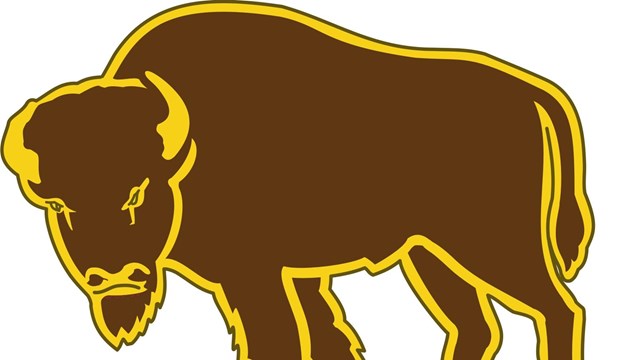
10th Cavalry Timeline
A brief overview of the 10th Cavalry's distinguished military history. 
Captain Nolan's Army Records
Company A commander, Capt. Nicholas Nolan, army record. |
|
On the morning of January 2, 1869 members of Co. A, 10th US Cavalry stood before the smoldering ruins of what had been the Fort Larned cavalry stables. The fire had killed 39 of the company’s horses, and destroyed huge stores of hay and grain, as well as saddles, and ammunition. It had started in the early hours of the morning while the men of Co. A were a ½ mile away guarding the post woodpile. The reason they were there and not able to help put out the fire was the culmination of a series of racial incidents that began almost as soon as they arrived at the post in April of 1867. |
|

NPS Photo According to the company's commander, Capt. Nicholas Nolan, Co. A “was organized on the 14th day of February, 1867 at Fort Leavenworth, Kansas.” Although initially reluctant to command a company of African American soldiers, Capt. Nolan soon came to admire their devotion to duty, hard work, and eagerness to prove themselves in the field. One thing that impressed him in the beginning was the way they cared for their horses on the march down to Fort Larned from Fort Riley in April of 1867 despite their inexperience. “My troop preserved its horses without disease, although the latter were young and unused to service of any kind, and brought them to Fort Larned, Ks. in such condition as to excite the admiration of Major Genl Hancock…” |
|
As soon as Co. A arrived at Fort Larned, they began performing the routine duties of any cavalry unit assigned to a frontier fort in the post-Civil War army. They took their turn at work details and guard duty, as well as caring for their horses and practicing cavalry drills. One of the most important functions of cavalry units at posts like Fort Larned was patrolling the surrounding area to see what the Indians were up to. Capt. Nolan reported that during the summer the men of Co. A made “several scouts between Forts Dodge and Larned, north of the Arkansas River along the courses of Pawnee and Walnut Creek and were continually on duty as mounted Escorts, Express riders, etc. under charge of non-commissioned officers very little experienced in their duties and yet all these duties were faithfully performed and to the lasting satisfaction of all concerned as my Company records can prove.” In 1868 the troopers of Co. A had a chance to prove their fighting ability in two engagements with Indians. In the first encounter, they assisted Fort Dodge by pursuing “a large party of Indians from that post fifteen miles to Mulberry Creek, killing three.” In December of that same year, Indians attacked a supply train bound for Fort Dodge at Little Cow Creek and drove off the cattle. Twenty troopers from Co. A rode 14 miles to Little Cow Creek, recaptured the cattle and escorted the train to safety. Thirteen men suffered frostbite in this action due to the severe winter weather at the time.
|
|
|
Like all soldiers at the time, they had to deal with the loneliness and monotony of garrison duty but the men of Co. A also faced resentment, jealousy, and bigotry from the white infantry soldiers stationed at Fort Larned. Even though separate companies usually kept to themselves, they did work alongside one another. It’s not difficult to imagine the jealousy and resentment a company of infantry might feel on a long day’s march in the hot Kansas sun when passed by the cavalry effortlessly striding by on their horses. The color of the 10th Cavalry’s skin added another level of resentment made possible by racism. |
|

NPS Photo On January 1, 1869, two men of Co. A and three men from the 3rd Infantry had a disagreement in the Sutler’s store over whose turn it was to use the pool table. One of the men from Co. A was said to have pulled his duty revolver on the white Infantry soldiers, which was a serious breach of military conduct. Although the post commander, Major Yard, did not have all the facts about what happened, he decided that the entire company should be punished and sent them to guard the post wood pile in a blizzard. Capt. Nolan protested vigorously against it, arguing that it was inappropriate to punish the entire company for the mistake of one man, who had already been confined to the barracks. Even the post surgeon, Capt. William Forewood expressed surprise at the order, writing that the “night of the 1st and 2nd, was stormy and bitter cold and Troop A 10th Cav, had been sent out of the post to do penance by guarding the post woodpile!!! One sentinel had been sufficient before, but this night a larger force was deemed necessary.” The cause of the fire was never identified, though it’s possible it was intentional. If the fire was arson perpetrated by a jealous infantryman, no one took responsibility for the act. Nor was anyone punished. Instead of launching a full investigation, Maj. Yard, sent the 10th Cavalry to Fort Zarah to avoid further trouble. On the day they left the post, Maj. Yard, reported that there had been an attempt to burn Co. A’s barracks. The first soldier to enter the barracks after the troopers left found it filled with smoke from a stack of hay and old clothes burning on the floor. Maj. Yard had no doubt that that particular fire was the the “work of an incendiary.” The 10th was the last cavalry unit to be stationed at Fort Larned before the fort was abandoned in 1878. |
Last updated: February 13, 2024
